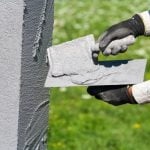Are you or someone you know a victim of abuse in need of free home improvements? Living in a safe and functional environment is crucial for abuse survivors to rebuild their lives.
This article will provide essential information on how to apply for free home improvements for abuse victims, understanding the importance of safe living spaces, finding organizations and programs offering assistance, eligibility requirements, steps to apply, the assessment and planning process, what to expect during and after home improvement projects, and resources and support available. The impact of free home improvements on the lives of abuse victims will also be discussed.
Abuse survivors often face challenges in finding secure and comfortable living arrangements. For many individuals, their homes may have been a site of trauma, making it difficult to feel safe within their own space. That’s why it’s crucial that survivors have access to resources that can help them create a supportive environment where they can heal and recover.
In the following sections, we will explore how abuse victims can find help with home improvements at no cost. From understanding eligibility requirements to navigating the application process, this guide aims to empower abuse survivors with the knowledge they need to access the support they deserve.
Understanding the Importance of Safe and Functional Living Spaces for Abuse Survivors
Abuse survivors often face numerous challenges when it comes to creating a safe and functional living environment. The impacts of abuse can extend beyond the emotional and physical, affecting the very spaces in which survivors live. It is crucial for abuse victims to have access to safe and secure homes that provide them with a sense of stability and comfort.
The following are some key reasons why safe and functional living spaces are essential for abuse survivors:
1. Safety: A secure home environment is crucial for abuse survivors, as it provides them with a sense of protection and security. This can help alleviate feelings of fear and anxiety that may result from past experiences of abuse.
2. Healing: A comfortable and functional living space can support the healing process for abuse survivors. Having a peaceful home environment can contribute to their overall well-being and aid in their recovery journey.
3. Independence: Safe and accessible living spaces also empower abuse survivors by allowing them to regain a sense of independence and control over their surroundings.
Finding organizations and programs that offer free home improvement services is a critical step in helping abuse survivors create the safe and functional living spaces they need. These organizations often provide various forms of assistance, ranging from simple repairs to entire home renovation projects. By accessing these resources, abuse victims can take significant steps towards rebuilding their lives after experiencing domestic violence or other forms of abuse.
For those who seek information on how to apply for free home improvements for abuse victims, it’s important to consider reaching out to relevant community organizations, government agencies, or non-profit groups that specialize in supporting survivors of domestic violence or abuse. These organizations may have specific programs dedicated to providing free home improvement services for eligible individuals.
Additionally, online research or contacting local shelters and support hotlines can also lead to valuable resources for obtaining free home improvements for those in need.
How to Find Organizations and Programs Offering Free Home Improvement Services
If you or someone you know is a victim of abuse and is in need of free home improvement services, there are organizations and programs that offer assistance to help create safe and functional living spaces. Finding these resources is an important step towards rebuilding a life free from the fear and distress caused by abuse. Below are some ways to locate organizations and programs offering free home improvement services for abuse victims:
1. Online Research: Utilize search engines and websites dedicated to providing information on resources for abuse victims. Look for non-profit organizations, government agencies, or community-based programs that specifically offer home improvement services for survivors of abuse.
2. Local Support Services: Reach out to local domestic violence shelters, crisis hotlines, or advocacy groups in your area. These organizations often have connections to programs that provide free home improvements for abuse victims and can guide you in the right direction.
3. Referrals from Professionals: Seek recommendations from social workers, therapists, legal advocates, or healthcare providers who work with abuse survivors. They may be aware of specific programs or organizations that offer home improvement assistance for those affected by abuse.
In addition to these methods, it’s also important to consider the eligibility requirements for free home improvement assistance and gather necessary documentation before applying.
By proactively seeking out these resources, individuals can take the first steps towards creating a safer and more secure living environment after experiencing domestic violence.
Eligibility Requirements for Free Home Improvement Assistance for Abuse Victims
Before applying for free home improvements for abuse victims, it is important to understand the eligibility requirements set by the organizations and programs offering these services. Most organizations require applicants to provide documentation of their status as an abuse victim, which may include police reports, restraining orders, or letters from domestic violence shelters or social workers.
In addition to proving their status as abuse victims, applicants may also need to meet certain income requirements in order to qualify for free home improvement assistance. Each organization or program has its own guidelines regarding income limits, so it is crucial to thoroughly research and understand these requirements before beginning the application process.
Another common eligibility requirement for free home improvement assistance is the ownership or tenancy of the property in need of improvements. Some programs may only offer their services to homeowners, while others may extend assistance to renters who have permission from their landlords. It is important for potential applicants to clarify this requirement with the organizations they are considering.
Lastly, some organizations offering free home improvement services for abuse victims may have specific criteria regarding the types of improvements that they can fund or provide. Understanding these limitations can help applicants prepare a more informed and successful application.
| Eligibility Requirement | Description |
|---|---|
| Documentation of Abuse | Police reports, restraining orders, letters from domestic violence shelters or social workers |
| Income Limits | Each organization has its own guidelines regarding income limits |
| Property Ownership/Tenancy | Some programs may only offer their services to homeowners, others extend assistance to renters with landlord permission |
| Type of Improvements | Organizations may have specific criteria regarding types of improvements they can fund or provide |
Steps to Apply for Free Home Improvements for Abuse Victims
Applying for free home improvements for abuse victims can be a life-changing opportunity for individuals in need. Suffering from abuse can often leave survivors in unsafe and dysfunctional living environments, making it essential to access the necessary resources for home improvements. Whether it’s addressing safety concerns or creating a more comfortable space, there are specific steps that individuals can take to apply for free home improvements.
Researching Available Programs and Organizations
The first step in applying for free home improvements is to research available programs and organizations that offer such assistance. There are numerous non-profit organizations, government agencies, and community groups dedicated to providing support for abuse victims. By conducting thorough research online or reaching out to local domestic violence shelters, individuals can gather information on potential resources and programs available in their area.
Understanding Eligibility Requirements
Before applying for free home improvements, it’s crucial to understand the eligibility requirements set forth by the assisting organizations. Eligibility criteria may vary depending on the specific program or service provider. Common requirements may include proof of abuse, financial need, residency status, and compliance with program guidelines. By gaining a clear understanding of these requirements, individuals can determine their eligibility and ensure they meet all necessary criteria before applying.
Submitting an Application
Once potential programs have been identified and eligibility requirements understood, individuals can proceed with submitting an application for free home improvements. The application process typically involves filling out forms and providing documentation to support the request for assistance. It’s important to complete the application accurately and honestly, as this information will be used to determine the level of support that can be provided.
By following these steps and actively seeking out available resources, abuse victims can take the necessary actions towards improving their living conditions through free home improvement assistance. This valuable support can make a significant impact on their overall well-being and provide a sense of security and stability during their journey towards recovery from abuse.
The Process of Assessment and Planning for Home Improvement Projects
One of the key aspects of the assessment and planning process is to involve professionals who specialize in home improvement and safety modifications. These experts can conduct a thorough evaluation of the home, looking at factors such as accessibility, security, and overall livability. Additionally, they can work with abuse victims to understand their specific needs and preferences, ensuring that the proposed home improvements align with their unique circumstances.
Following the assessment phase, the next step is to develop a detailed plan for the home improvement projects. This plan should outline the specific changes or modifications that need to be made, along with a timeline for implementation.
It may also include cost estimates, funding sources (if applicable), and any necessary permits or approvals. By having a clear plan in place, abuse victims can have a better understanding of what to expect during the home improvement process and feel empowered by being actively involved in decision-making.
According to recent studies, approximately 1 in 4 women and 1 in 9 men experience severe intimate partner physical violence, intimate partner contact sexual violence, or intimate partner stalking with impacts such as injury, fearfulness or post-traumatic stress disorder (PTSD). These statistics highlight the critical need for safe living environments for abuse survivors.
By undergoing a thorough assessment and planning process for home improvements, these individuals can take significant strides towards reclaiming their sense of security and stability within their own homes.
| Key Considerations | Details |
|---|---|
| Home Evaluation | Professionals conduct thorough assessment of current living conditions |
| Collaborative Planning | Involvement of experts in developing comprehensive improvement plans |
| Statistics on Abuse | About 1 in 4 women & 1 in 9 men experience severe intimate partner violence |
What to Expect During and After the Home Improvement Process
After receiving approval for free home improvement assistance for abuse victims, individuals can expect a thorough and organized process to transform their living space into a safe and functional environment. It is crucial to understand what to expect during and after the home improvement process in order to fully benefit from the support and resources provided.
Initial Consultation and Assessment
The first step after being approved for free home improvements is an initial consultation with representatives from the organization or program offering the assistance. During this meeting, a thorough assessment of the individual’s living situation will take place. This may include identifying areas of the home that require improvements for safety and functionality, as well as discussing specific needs and preferences of the abuse victim.
Development of Home Improvement Plan
Following the assessment, a customized home improvement plan will be developed based on the specific needs and circumstances of the abuse victim. This plan may involve various modifications such as installing security features, repairing structural damage, improving accessibility, or addressing any other safety concerns within the home. The development of this plan will ensure that every aspect of the home improvement project is tailored to meet the individual’s needs.
Implementation and Follow-Up
Once the home improvement plan has been finalized, the actual implementation process will begin. This may involve coordination with contractors, suppliers, or volunteers who will contribute to executing the necessary improvements.
Throughout this phase, regular communication between the organization providing assistance and the abuse victim is essential to ensure that all aspects of the plan are being implemented effectively. After completion of the home improvements, follow-up support may also be provided to address any additional needs or concerns that arise.
These steps are vital in understanding what abuse victims can expect during and after their free home improvement process. By having a clear understanding of each phase, individuals can make informed decisions and actively participate in creating a safe living environment for themselves and their families.
Resources and Support for Abuse Victims Seeking Home Improvement Help
Abuse victims who are seeking help with home improvements can find a wealth of resources and support from various organizations and programs dedicated to assisting survivors. These resources provide a range of services aimed at ensuring that abuse victims have safe and functional living spaces where they can rebuild their lives. From advocacy groups to government agencies, there are several avenues that abuse victims can explore to access free home improvement assistance.
One valuable resource for abuse victims in need of home improvements is local domestic violence shelters and organizations. Many of these organizations offer support programs that include housing assistance, including free home repairs and renovations. Additionally, government agencies at the federal, state, and local levels may offer grants or subsidies specifically for improving the living conditions of abuse survivors.
In addition to physical home improvement services, abuse victims can also benefit from emotional support and counseling as they navigate the process of seeking assistance for their living spaces. Many organizations that offer free home improvement services also provide access to mental health resources and support groups to address the complex needs of abuse survivors. By accessing these comprehensive services, abuse victims can take essential steps towards reclaiming their sense of security and autonomy within their homes.
Impact of Free Home Improvements on the Lives of Abuse Victims
Free home improvements for abuse victims can have a profound impact on their lives, as it provides them with the opportunity to create safe and functional living spaces that are crucial for their recovery and well-being. By receiving assistance from organizations and programs that offer free home improvement services, abuse survivors can regain a sense of control and security in their own homes.
Home improvement projects not only enhance the physical aspects of a survivor’s living environment but also contribute to their emotional healing and empowerment. Through the support and resources provided by these programs, abuse victims can rebuild their lives and move forward with a renewed sense of hope and optimism.
It is important for individuals who have experienced abuse to know that they do not have to face the challenges of home maintenance and safety improvements alone. By understanding the eligibility requirements, taking the necessary steps to apply for free home improvements, and accessing available resources, abuse survivors can transform their living spaces into sanctuaries where they can heal and thrive.
Overall, these initiatives have the potential to make a lasting positive impact on the lives of those who have been affected by abuse. If you or someone you know is an abuse survivor in need of home improvement assistance, don’t hesitate to explore the options available for support.
Frequently Asked Questions
What Are the Requirements for the Property Improvement Program in Michigan?
The Property Improvement Program in Michigan requires property owners to meet certain income requirements, have good credit, and provide proof of ownership. The program focuses on helping low-income individuals make necessary home improvements.
Who Is Eligible for Government Home Improvement Grant Florida?
Eligibility for government home improvement grants in Florida is typically based on income, with a focus on low-income households. Applicants may need to provide documentation of their financial situation and show that they own the property in need of improvement.
Is There a Program to Help Seniors With Home Repairs in Alabama?
In Alabama, there are programs specifically designed to assist seniors with home repairs. These programs aim to help elderly homeowners age in place by addressing safety and accessibility concerns within their homes. Seniors may receive assistance with various repairs and modifications to their homes.

I’m thrilled to have you here as a part of the Remodeling Top community. This is where my journey as an architect and remodeling enthusiast intersects with your passion for transforming houses into dream homes.





